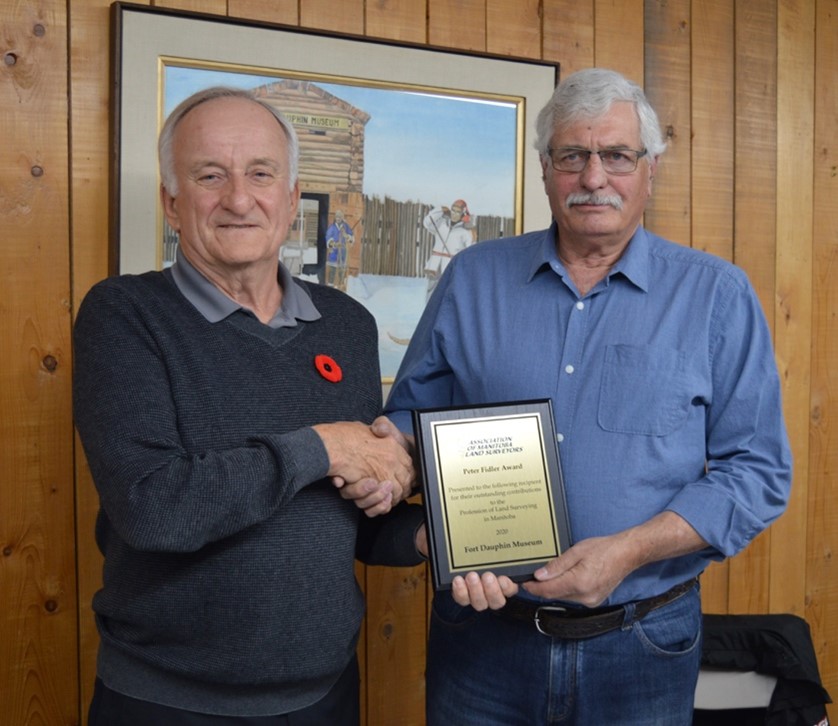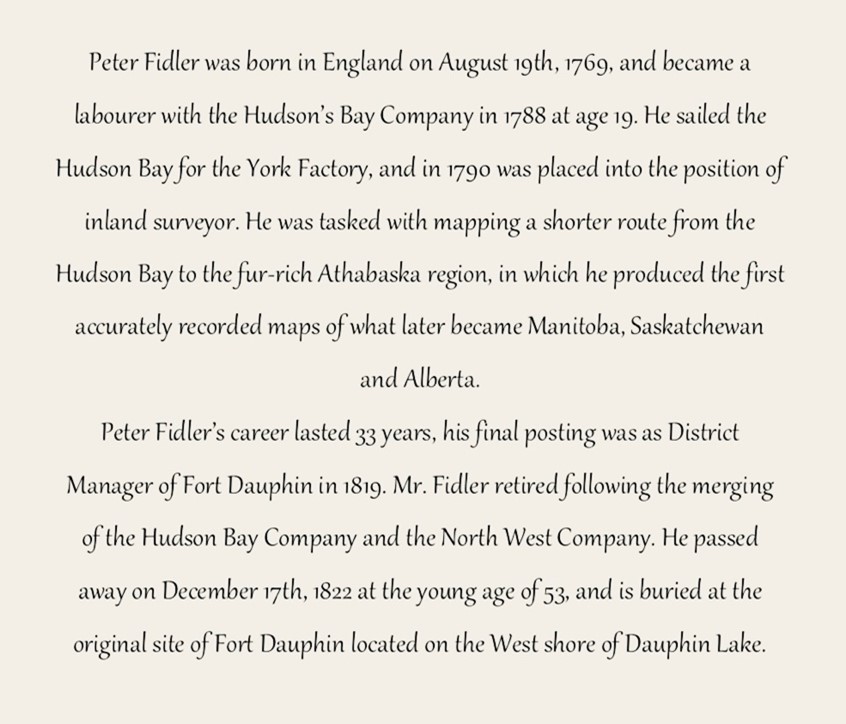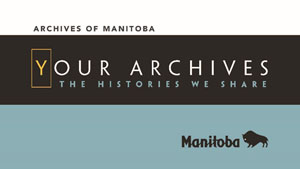Member News & Events
EDITORIAL
The State of Heritage in Manitoba: A Call to Action
by Gordon Goldsborough
Prairie Pageant Editor & Production Coordinator, Prairie History
(as it will appear in Prairie History, Dec. 2022)
I assume that, as a reader of Prairie History, you value information and artifacts that connect us to the history of the land in which we live. If you do, and you live in Manitoba, I want to warn you about a little-known crisis that has developed slowly over the last several decades, and which threatens the future of the past.
In 2020, as President of the Manitoba Historical Society (MHS), I proposed that we meet with our counterparts in other Provincial Heritage Agencies (PHAs) to discuss hosting a Manitoba Heritage Summit. Its purpose would be to foster dialogue among the agencies and to share experiences and information to mutual benefit. In meetings held to organize the Summit in the fall of that year, it became clear that the MHS had a lot in common with its sister organizations: the Association for Manitoba Archives, the Association of Manitoba Museums, Heritage Winnipeg, the Jewish Heritage Centre of Western Canada, La Société historique de Saint-Boniface, the Manitoba Archaeological Society, and the Manitoba Genealogical Society.
Most notable of our commonalities was a concern over the inadequacy of funding that we each receive from the Manitoba government. For the MHS, an operating grant from the government is an essential part of our annual budget, for which we are grateful, but it has not had a meaningful increase in at least two decades. The funding process starts with the amount a PHA received last year, then potentially whittles it down from there. There is no mechanism for any increase in funding. Indeed, when inflation is taken into account, our provincial funding has decreased. Yet, government expectations of the amount of work that we must do to justify our funding has remained unchanged or has increased. In short, we must do more … with less.
In the aftermath of the 2020 Heritage Summit, the PHAs hired a consultant to compile statistics and information for a report on the state of the heritage community in Manitoba. That report confirmed our initial perceptions and was the basis for a panel discussion at the second Heritage Summit held in October 2021.
In the spring of 2022, representatives of the eight PHAs asked to meet with the Honourable Andrew Smith, the minister responsible for the heritage portfolio, to draw to his attention our concerns over provincial support of our work. Although we had a congenial and (we thought at the time) productive meeting, a subsequent letter from provincial staff advised that no new funding would be forthcoming. This was the leadup, therefore, for a session at the third Heritage Summit in October 2022, chaired by Michel Lagacé (Board Chair, La Société historique de Saint-Boniface) with presentations by Thomas McLeod (Executive Director, Association of Manitoba Museums), Alicia Gooden (President, Manitoba Archaeological Society), and me.
My remarks focused on the involvement by the provincial government in the whole realm of heritage. The portfolio over which Minister Smith presently presides has had numerous name changes over the past 50 years and, if we can ascribe any significance to each name, heritage is not a major priority. The portfolio of Sport, Culture & Heritage (the name by which it has been known since 2016 when “Heritage” rejoined after a three-year absence) is a small one in which ministers turn over frequently. Fifty years ago, the government formed the Historic Resources Branch (HRB) to coordinate its responsibilities in all areas of history and heritage. The HRB staff was responsible for doing original research on Manitoba history; conducting inventories of historic structures such as churches, schools, railway stations, and grain elevators; conducting and supervising archaeological investigations; installing plaques to commemorate noteworthy historical people, events, and places; providing guidance and advice to the government, municipalities, and public; and administering cash grants to groups doing a diverse range of historical projects.
The “golden years” of the HRB—when its staff were active in all the above works—occurred in the 1980s and 1990s. Among the government’s accomplishments was the passing in 1986 of a new Heritage Resources Act to replace the Historic Sites and Objects Act of 1967. Provisions of the new Act included protocols for the designation of heritage sites at the provincial level, definition of protective measures for important sites, making provision for designation of heritage sites at the municipal level (through the establishment of Municipal Heritage Advisory Committees or MHACs to advise municipal councils and, where possible, to undertake work at the local level), and recognizing heritage objects and the proper procedures for the handling of ancient human remains.
Today, the HRB is involved primarily in government advisory, archaeological scrutiny, and financial administration, and the rest of its former responsibilities either do not happen or are done mostly by volunteers working for the PHAs and various other groups around the province. Evidence of the Branch’s erosion in capability can be seen in the size of its staff complement, as reconstructed from annual telephone directories for provincial civil servants. From humble origins in early 1970s when the HRB had one employee (and possibly short-term contract workers who did not warrant a telephone), the total rose to 26 in the early 1990s. Since the mid-2000s, the number has dwindled to fewer than ten by 2018. Commemorations that spiked in the 1980s and 1990s dropped in the 2000s. Only a single historic site designation at the provincial level occurred in the 2010s, and none have taken place in the 2020s. It appears the provincial government has gotten out of the plaque business, so much so that degraded plaques unveiled decades ago are retrieved and put into long-term storage.
This downward trend would be less worrisome if other levels of government “picked up the slack.” However, while municipal designations in Manitoba were high in the 1990s and 2000s, the total has fallen in the 2010s and 2020s. Although every one of Manitoba’s 137 municipalities is encouraged to establish an MHAC, I suspect that many exist only on paper, either because there are no local advocates to serve on them or municipal councils see no need to seek their advice. I can think of fewer than ten MHACs that undertake work on a regular basis. At the federal level, the Historic Sites and Monuments Board of Canada continues to make periodic designations in Manitoba, with prolonged delays between the announcement of a new designation and the official unveiling of a plaque. For example, Winnipeg’s Ukrainian Labour Temple was designated as a national historic site in 2009 but it took three years for its plaque to be installed.
Provincial government participation in the recognition of historic sites dates to 1946, when the Historic Sites Advisory Board of Manitoba was established. This group of private historians, architects, archaeologists, and other citizens made recommendations to identify, protect, preserve, commemorate, and interpret historically and architecturally significant places, buildings, people, and events in Manitoba. In the 1950s, the Board encouraged the installation of commemorative plaques at wayside parks, many of them dealing with the province’s early fur trade trails and trading posts. Canadian centennial celebrations in 1967 and Manitoba’s centenary in 1970 saw increased activity, with an emphasis on political and historical themes such as the boundaries of the “Postage Stamp Province” and the origin of the name “Manitoba”. In the 1980s, there was a trend to expand commemorative themes to represent those who had long been ignored as contributors to society; women, labour, ethnic and Indigenous heritage were highlighted. In 1986, the new Heritage Resources Act changed the Board’s name to the Manitoba Heritage Council and made it a senior advisory body to the HRB.
Unfortunately, although the Heritage Council traditionally met several times a year, it has not convened since 2016. Its role is presently being re-evaluated by the provincial government, along with a lot of other agencies, boards, and commissions, many of which are expected to disappear. Since its role is mandated by the Heritage Resources Act, the Council’s future seems safe, but we understand that its role may be restricted to re-evaluating existing plaque text for cultural sensitivity.
Presently, Manitoba’s Heritage Resources Act, which is now 36 years old and showing signs of its age in light of changing societal priorities, seems to have relevance only to the protection of designated sites and objects, and the handling of human remains. Heritage objects were perceived as items that did not fit into other categories of preservable artifacts. Only two of them have ever been designated under the Act: The Pas’s Skippy L ship and Winnipeg’s statue of Timothy Eaton. Human remains have taken on new dimensions in light of Indigenous remains unearthed during major construction projects and concerns over the deaths of Indigenous children at residential schools.
Meanwhile, unpaid volunteers of the Manitoba Historical Society are fulfilling many of the responsibilities formerly handled by trained, heritage professionals of the Historic Resources Branch (which in 2021 was renamed the Community Programs and Services Branch—notice the absence of any mention of history or heritage). We receive huge numbers of public inquiries daily, many of them pertaining to matters that should rightfully be answered by civil servants. Through our online historic sites mapping project (www.mhs.mb.ca/docs/sites) that our volunteer researchers and photographers have been building for the past dozen years, we are drawing attention to historical people, places, and events in ways that municipal, provincial, and federal plaques never could, and in the process we are building comprehensive inventories of historic structures that are useful for resource management and promotion of tourism.
Is the MHS well compensated for this work? Definitely not, and neither are our PHA kin for the work they do. A case in point is the Manitoba Archaeological Society (MAS). Founded in 1961, it organizes meetings and conferences, publishes a scholarly journal, and is presently participating in the investigation of a pre-contact Indigenous farming site in southwestern Manitoba. The MAS is run entirely by unpaid volunteers. Due to chronic low funding, the MAS closed its office several years ago and all its equipment and files were transferred into a rented storage unit. A year ago, they were moved into a board member’s carwash in Virden. We are told that Manitoba has become known as “The Black Hole of Archaeology” in the international community despite the fundamental importance of this field to a full understanding of Manitoba’s past.
The woeful funding situation in Manitoba is put into context by comparing the equivalent funding for provincial heritage organizations in Saskatchewan, our immediate neighbour to the west. Annual PHA funding from the Manitoba government ranges from $11,200 to $75,900 (median $27,400) while associations of archives and museums; archaeological, historical, and genealogical organizations; and Francophone historical groups in Saskatchewan receive $170,000 to $582,000 (median $180,500) or roughly seven times as much. Do people in Saskatchewan value their heritage more than those in Manitoba? If dollars count for anything, it appears so.
In summary, financial support for Manitoba’s heritage community is small compared to comparable jurisdictions, is declining in relative purchasing power, and is unstable because funding decisions are made annually so there is no meaningful opportunity for long-term strategic planning. The PHAs are struggling with the same issues of aging demographics and worker burnout as other volunteer-driven organizations in Manitoba. There are few opportunities for young Manitobans to find paid employment in the heritage sector. We are being called on to improve inclusivity of all perspectives and Indigenous reconciliation with no infusions of resources to do so. If the COVID-19 pandemic has taught us anything, it is that technology can engage Manitobans regardless of where they live, but do heritage organizations have the means to exploit this potential to meet their province-wide mandates? I do not think so.
In my view, the solution to the woes of the heritage community in Manitoba comes down to money—much more of it and more stability in its provision. We have advocated to the provincial government to establish endowment funds—as it has done for a few “signature museums” around Manitoba—that would provide PHAs with stable funding sufficient to enable each of them to have, at a minimum, an office and one paid staff person. That proposal has, to date, been ignored.
I believe the present situation in Manitoba’s heritage community is unsustainable and, unless there is a meaningful re-engagement on the part of all levels of government, I predict bad times ahead. I urge you, as a reader of Prairie History, to raise this concern with your elected representatives.
Shoestring, Rope, or Cable?
December 8, 2022
By Gary Dyck, Executive of the Mennonite Heritage Village (Steinbach)
(As it will appear in The Carillon, Steinbach)
In the 1980s it became popular for charities to try to outdo one another by showcasing how little of their funding went to overhead. Remember the pie charts and the breakdown of where each cent of your dollar goes? It’s not that simple.
As the Executive Director of Mennonite Heritage Village (MHV), I have the privilege of connecting with museum leaders across the province, including hosting last week’s gathering for the Eastman and Interlake museums. I see that the museums that have the most impact are the ones with a mid-size overhead. When it comes to dealing with humanity, a shoestring budget is not best.
A shoestring non-profit has an operations board and maybe one or two permanent staff (like MHV in the early 1980s), and disorganized volunteers. Their overhead is low, but so is their ability to pursue funding opportunities, maintain their facilities, and plan engaging programming. If a key person leaves or a narcissist takes over the board, the string may snap. Many small museums are here.
A rope non-profit has a governance board, a small team of permanent professionals, and an organized volunteer base. If these three strands are healthy, you’ll have a vibrant non-profit. Their overhead is medium, but the staff can get a high amount of funding through grants, donor relations, and creative revenue streams. They may be stretched, but they can also develop amazing exhibits and events that keep attracting visitors. Rope non-profits can grow each year and flex to the needs and opportunities around them. Small, mid-size, and even some large-size museums can be found here.
A cable non-profit has a distant governance board, a large group of permanent professionals, and restrained volunteers. These strong institutions can become bureaucratic and unwieldy. Their overhead is large, but generally have the funding they need thanks to government support. The people involved may feel they don’t have much ‘wiggle-room’ for their work. Unhealthy mid-size and large-size museums can be found here, while some healthy large museums can make it work.
So this year, as you consider your financial giving, remember that a non-profit with a shoestring budget is probably not something to be excited about. There is a sweet spot where the right ropiness of overhead makes for an effective organization. At MHV, I believe we are at that place. I’m so thankful for the vision of our predecessors to move MHV towards a governance board and hire professional staff so that MHV could fulfill its vision of being ‘the premier interpretive centre for the Russian Mennonite story’. It is now my job to make sure we remain a robust rope and not become a cumbersome cable.
Please consider a donation to MHV this year. This rope has much good to do!
Fort Dauphin Museum Wins Award!
Fort Dauphin Museum is proud to be awarded the 2020 Peter Fidler Award on behalf of the Association of Manitoba Land Surveyors. We want to thank Balchen and Kulchycki Surveys for nominating Fort Dauphin Museum to receive this award. Thank you to John Kulchycki (left) for presenting Fort Dauphin Museum President Dennis Forbes (right) this award under the unusual circumstances of the pandemic.
The Association of Manitoba Land Surveyors established The Peter Fidler Award in 1989 to award a person or persons who have exhibited an outstanding contribution to promoting the profession of land surveying in Manitoba. Fort Dauphin Museum is recognized by the nomination committee for the efforts made over the past 50 years to promote the life and career of Peter Fidler - surveyor, cartographer, trader, scholar and naturalist - who worked extensively with the Hudson’s Bay Company.

John Kulchycki (left) for presenting the award to
Fort Dauphin Museum President, Dennis Forbes.

May 12, 2020 will mark 150 years since the Manitoba Act received royal assent, paving the way for Manitoba to become Canada’s fifth province. The Manitoba 150 Host Committee is engaging Manitobans in the yearlong celebration of this momentous milestone.
The Manitoba 150 Host Committee aims to support initiatives and events that cultivate pride in our province, foster a profound connection with our diverse cultures and, above all, unite us in celebration.
During Manitoba's Sesquicentennial year, Manitoba 150 will be offering programs, events, resources and many other opportunities to celebrate our province's milestone.
Here is a list of their programs to date:
- Build 150 - Manitoba’s community foundations are celebrating our province’s 150th anniversary by leaving a legacy with brick and mortar projects!
- Celebrate 150 - Celebrate 150 Events will be posted as they are announced, with a final listing posted in mid-February.
- Explore 150 - An app to inspire visiting some of Manitoba's unique destinations with challenges and prizes to be won.
- Honour 150 - This program aims to inspire future community engagement and leadership by recognizing individual Manitobans for their outstanding contributions to the well-being of their communities.
- See the Honour 150 Recipients
- Manitoba 150 Trails - Features a variety of outdoor activities, including sledding, hockey, and family fun.
- Mural 150 - Up to five Manitoba communities will receive a subsidy for the creation of a contemporary mural curated by Synonym Art Consultation that will highlight the local community, spark conversations, and inspire engagement.
- Tour 150 - A mobile display featuring 150 pieces from the Winnipeg Art Gallery – will travel to over 50 festivals, fairs and community events across the province throughout 2020.
-
Unite 150 - A FREE outdoor full-day concert featuring Manitoba’s iconic music acts, exciting cultural programming and memorable family fun at the Manitoba Legislature. (August 28, 2021)

In 2020, Manitoba commemorated 150 years as a province and 350 years since the founding of the Hudson’s Bay Company. The Archives invites you to continue building our Your Archives exhibit in 2021.
You can participate by visiting us online at www.manitoba.ca/yourarchives
You can also follow us on Twitter @MBGovArchives or email us.
Heritage Trust Program - Update
Click HERE for the latest information on the province's new funding program

